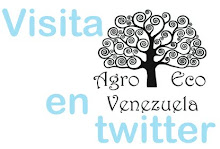Lauren D. Snyder, Miguel I. Gómez and Alison G. Power
viernes, 8 de mayo de 2020
Crop Varietal Mixtures as a Strategy to Support Insect Pest Control, Yield, Economic, and Nutritional Services
Lauren D. Snyder, Miguel I. Gómez and Alison G. Power
Lauren D. Snyder, Miguel I. Gómez and Alison G. Power
Most on-farm diversification strategies to enhance ecosystem services,
such as insect pest control and yield, have focused on expanding crop
species diversity. While polycultures often provide valuable services,
logistical constraints with planting and harvesting can hamper
implementation on large scales. An alternative diversification strategy
is to increase within-field intraspecific crop diversity through the use
of crop varietal mixtures. Here, we evaluate an interdisciplinary body
of research to determine the potential for crop varietal mixtures to
support food security by providing ecological, economic, and nutritional
services. Previous literature has synthesized the link between varietal
mixtures and yield and insect pest suppression services. We expand on
prior analyses by considering hypotheses generated from species-level
research and assessing whether they also provide a useful framework for
predicting how varietal mixtures affect crop productivity and insect
pest suppression. In addition, we evaluate the potential for varietal
mixtures to increase farm resilience and growers' profits. While there
is a growing effort to quantify the economic value of ecosystem services
provided by agrobiodiversity in terms of enhanced yield or revenue,
much less attention has been given to quantifying the production costs
associated with diversification schemes. Consequently, we know little
about the effect of diversification practices on farm profitability, the
metric of ultimate importance to farmers. We address this issue by
evaluating the ability of varietal mixtures to reduce production costs
associated with other types of agrobiodiversity and outline areas for
future research to better understand the profit implications of varietal
mixtures. Further, we review evidence that varieties of some crop
species differ in phytochemical content—a functional trait important for
insect pest suppression and human dietary diversity—suggesting that
varietal mixtures could be designed to simultaneously support insect
pest control and human nutrition services. Given that little research
has explicitly addressed the capacity for varietal mixtures to support
human nutrition, we outline predictions for where we would expect to see
the greatest nutritional impact of mixtures, providing a foundation for
future human nutrition research. Taken together, our review suggests
that varietal mixtures are a promising and logistically feasible
strategy that could simultaneously support multiple services.
Conceptual framework for comparing the services (human nutrition, yield
stability, insect pest control) and economic implications (labor,
implementation effort, profits) associated with agricultural management
practices. In this qualitative diagram, the level of service or economic
implication is indicated along each axis; achieving greater distance
along each axis indicates a stronger benefit. To illustrate predictions
for how services and economic implications will vary with the level of
diversification, we compare three hypothetical agriculture systems: a
monoculture, growing a single crop variety in a field (closed circle); a
polyculture, intermixing multiple crop species together in a field
(open circle); and a varietal mixture, planting multiple varieties of
the same crop species together in a field (open square). In general,
polycultures enhance many services (Poveda et al., 2008; Letourneau et al., 2011), but production costs can be high (Gliessman, 1985; Tooker and Frank, 2012). In contrast, monocultures minimize costs, but are poor producers of some services (Altieri, 1999; Karp et al., 2012).
We propose varietal mixtures could serve as an intermediate strategy
that addresses some of the limitations associated with monocultures and
polycultures. The symbol “?” represents predictions with the least
amount of supporting evidence.
.
Suscribirse a:
Enviar comentarios (Atom)











No hay comentarios:
Publicar un comentario